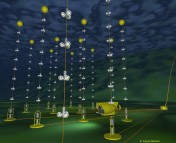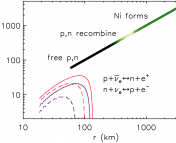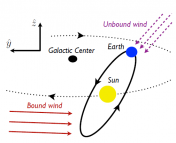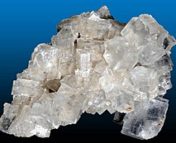Paper Title: Cherenkov Tau Shower Earth-Skimming Method for PeV-EeV Nu-Tau Observation
Authors: Y. Asaoka, M. Sasaki
First Author’s Affiliation: Institute for Cosmic Ray Research, University of Tokyo, Japan
Somewhere in another galaxy a large star takes its last proverbial breaths. No longer able to maintain fusion reactions within its core, the star collapses under its own weight. A quick death occurs in mere milliseconds. The star now belongs to a very special class of objects: supernovae. Supernovae are the most energetic events in the universe. An enormous amount of energy is released during this process, much of it in the form of gamma rays and neutrinos.
Back here on Earth, we can detect these distant events as gamma ray bursts (GRBs), a sudden increase in gamma ray flux. GRBs were first discovered accidentally during the 1960’s by the US military, and have been a popular subject of study by astronomers and high-energy physicists ever since. A breakthrough in GRB understanding happened in 1997 when GRB 970228 was detected by the Beppo-Sax satellite and revealed that GRBs were accompanied by a longer-lasting afterglow.
The source of the afterglow is the interaction between the supernova and the surrounding environment. The ejected material from the supernova travels away from the explosion at relativistic speeds and eventually runs into slower material, creating a shock front that glows as it is heated by the expanding debris. This discovery paved the way for our modern understanding of gamma ray bursts and led to the development of a standard model for GRBs.
The more recently launched X-ray observatories, Swift and Fermi, have observed gamma ray bursts in greater detail and found some phenomena that aren’t easily explained by the standard model. To get a better grip on this complicated process, it is necessary to examine not only high-energy photons, but also the high-energy particles that are produced by these events. Photons are easily absorbed or deflected within the dense region near a supernova explosion. Neutrinos, on the other hand, being electrically neutral and extremely small, hardly interact with matter at all. This makes them very useful for probing the conditions created by the GRB and its afterglow.
The thing that makes neutrinos so useful for this sort of analysis is ironically the same thing that makes them so difficult to analyze. Their reluctance to interact with matter makes their detection something of a chore. The authors of this paper set out to examine GRB neutrinos through the use of the All-sky Survey High Resolution Air-shower (Ashra) detector located on Mauna Loa in Hawaii. The detector is designed to detect Very High Energy (VHE) particles and boasts a 42-degree field of view with arcminute resolution.

Figure 1: Diagram of the Cherenkov tau shower method. Tau neutrinos pass interact within Mauna Kea and produce tau leptons, which ultimately lead to a air shower event between Mauna Kea and Mauna Loa. Cherenkov radiation is produced during the shower.
Neutrinos are commonly detected within large volumes of water or ice that serve as a source for Cherenkov radiation. However, the Ashra detector uses a different technique known as Earth-skimming technique (Fig.1). VHE tau neutrinos interact within neighboring Mauna Kea and produce tau leptons (
), which then decay in the atmosphere and produce an air shower. This shower moves faster than the speed of light in air (not to be confused with the speed of light in a vacuum) and produces Cherenkov photons, which are then detected by Ashra.

Figure 2: Tau lepton deflections for photonuclear interactions. All other interactions were found to produce deflections equal to or less than those shown in this figure.
Before collecting data, the authors had to be sure that the deflection of the air shower would not exceed the angular resolution limitations of the collector. A series of particle simulation software packages were used to estimate the amount of shower deflection, taking into account energy losses through ionization, Bremsstrahlung, pair production, and photonuclear interaction processes. The simulated results showed that the tau lepton deflection angles did not exceed the 1 arcminute resolution offered by the Ashra detector (Fig. 2).
This is as far as the authors went in this paper. Their aim was to determine whether the Ashra detector was precise enough to accurately observe the shower of particles produced from VHE tau neutrino interactions. The detector passed the test, offering the capability to better probe the innards of gamma ray bursts and their associated afterglow to more fully understand the processes at work within.
The first results that use this method have been published in the Astrophysical Journal and can be found on the arXiv here.




